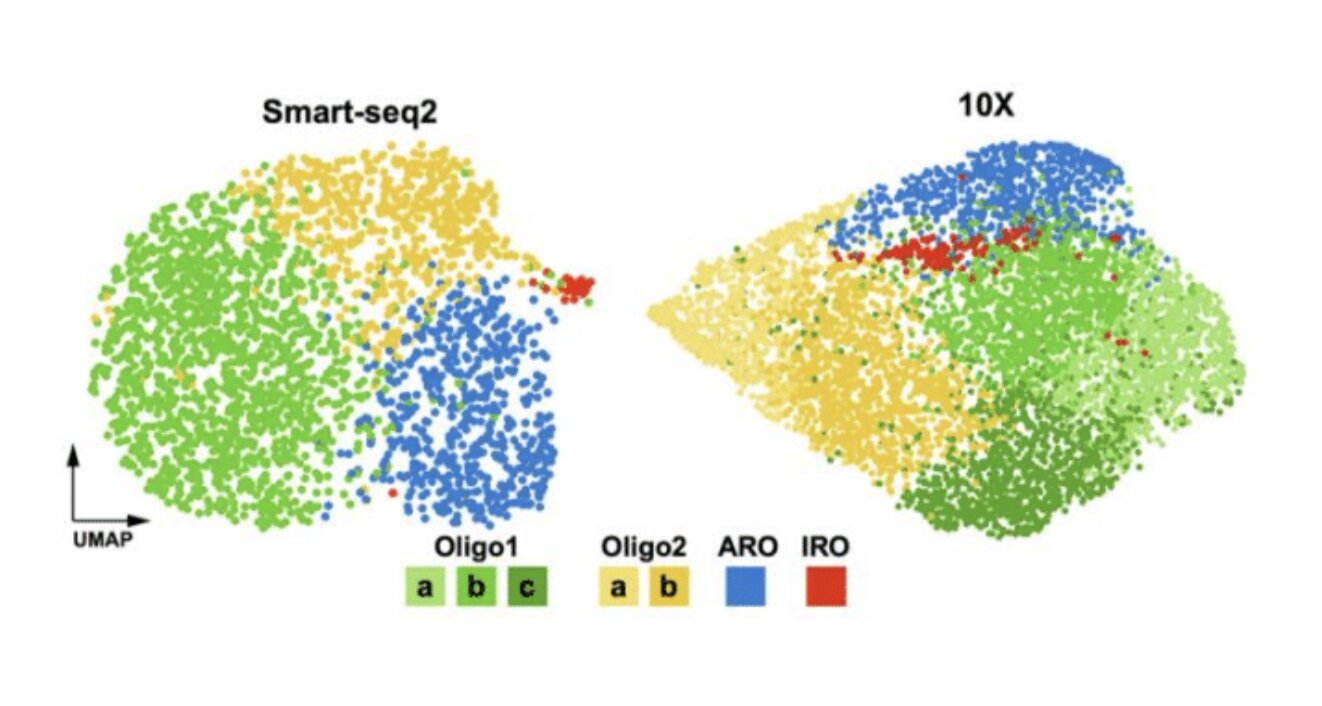
Past neuroscience studies have consistently demonstrated that the aging of the mammalian nervous system is liked with a decline in the volume and functioning of white matter, nerve fibers found in deep brain tissues. Although this is now a well-established finding, the mechanisms underpinning the decline of white matter and associated pathologies are poorly understood.
Researchers at Ludwig Maximilian University (LMU) of Munich, Technical University of Munich, the German Center for Neurodegenerative Diseases, Munich Cluster of Systems Neurology and University Hospital Würzburg have recently carried out a study aimed at better understanding the neural mechanisms that might result in the deterioration of white matter. Their findings, published in Nature Neuroscience, suggest that adaptive immune responses could promote the loss of cells in aging white matter.
“Among the hallmarks of brain aging is a decline in white matter volume and function which leads to an increase in neurological disorders,” Mikael Simons and Özgün Gökce, two of the researchers who carried out the study, told Medical Xpress. “White matter contains nerve fibers (axons), which are extensions of nerve cells (neurons). Many of these nerve fibers are surrounded by a type of sheath or covering called myelin, which allows our neurons to communicate fast, and gives white matter its color.”
The key objective of the recent work by Simons, Gökce and their colleagues was to better understand what causes the decline of white matter in the brains of mammals as they age, identifying the specific reactions of brain cells to aging. In one of their previous works, published in Neuron, the researchers found an association between aging and alterations of white matter in the brain, which prompt microglia (i.e., resident immune cells in the brain) to be more reactive.
“In our previous work, we showed that microglia help to clear age induced myelin damage,” Simons and Gökce. “We followed up on this work and tried to understand how these changes occur and focused on the role of oligodendrocytes (myelinating cells of the central nervous system) as they are the cell being lost in aging.”
To unveil the mechanisms underpinning white matter decline in the aging brain, the researchers carried out a series of experiments on mice. More specifically, they used a combination of mouse genetics, single cell genomics and morphological analyses to study what happened in the mice’s brains as they aged.
Their experiments led to an unexpected discovery, namely that adaptive immune responses drive interferon-responsive microglia and oligodendrocytes in the aging white matter. This means that in mammals, some of the body’s natural responses to fight diseases might cause the loss of vital brain cells and in the decline of white matter.
“In our study, we showed that the adaptive immune responses are one cause of the cellular loss in aging brain. This suggest that if we block harmful adaptive immune responses, we can possibly postpone bra7in aging,” Simons and Gökce said.
By analyzing the data collected in their experiments, Simons, Gökce and their colleagues were able to identify two types of oligodendrocyte states associated with aging. In their paper, they termed these states “age-related” and “interferon-responsive” oligodendrocytes.
“We were surprised to see how extensively oligodendrocytes respond to aging in the white matter,” Simons and Gökce said. “We also observed that CD8 T cells drive the formation of interferon-responsive oligodendrocytes. Together, our findings show that the adaptive immune system is an important modifier of white matter aging.”
The results gathered by this team of researchers could improve the current understanding of the aging brain and particularly of the mechanisms underpinning the decline of white matter. In the future, they could help to shed more light on the causes of some neurological disorders, potentially promoting the development of more effective treatment strategies.
“We are currently analyzing whether the changes we observed in mice also occur in the aging human brain,” Simons and Gökce added. “In our next study, we would also like to explore how infections such as COVID-19 and flu alter white matter aging.” https://medicalxpress.com/news/2022-11-immune-responses-cellular-loss-aging.html
https://www.nature.com/articles/s41593-022-01183-6








Recent Comments